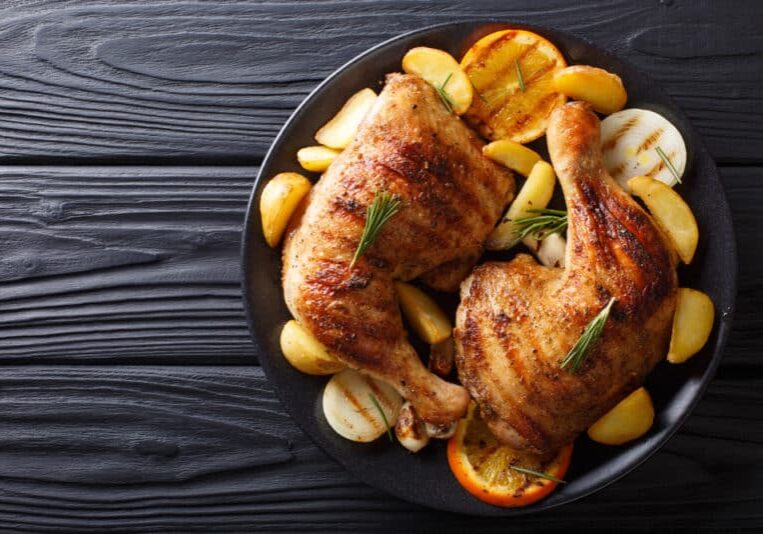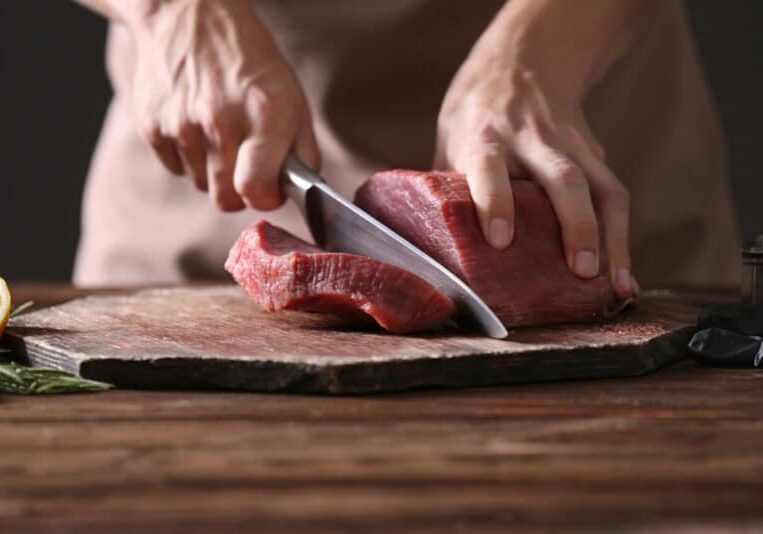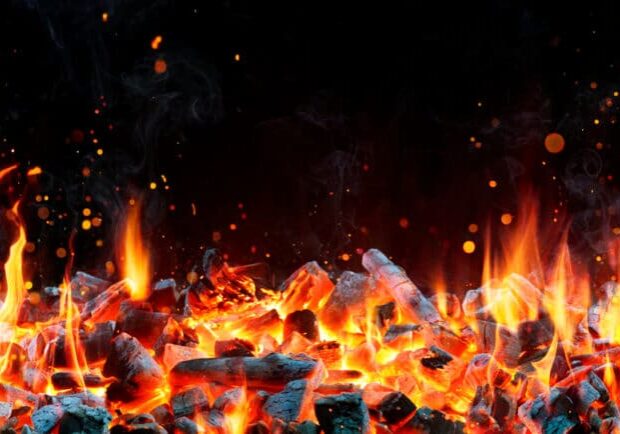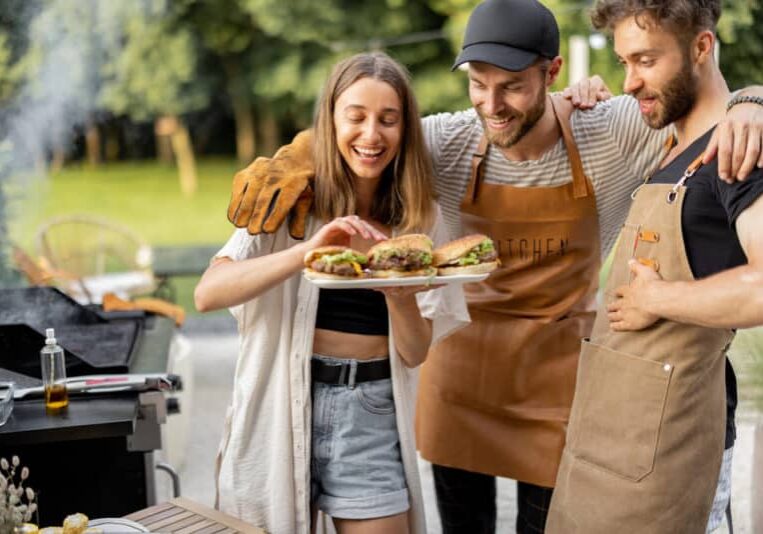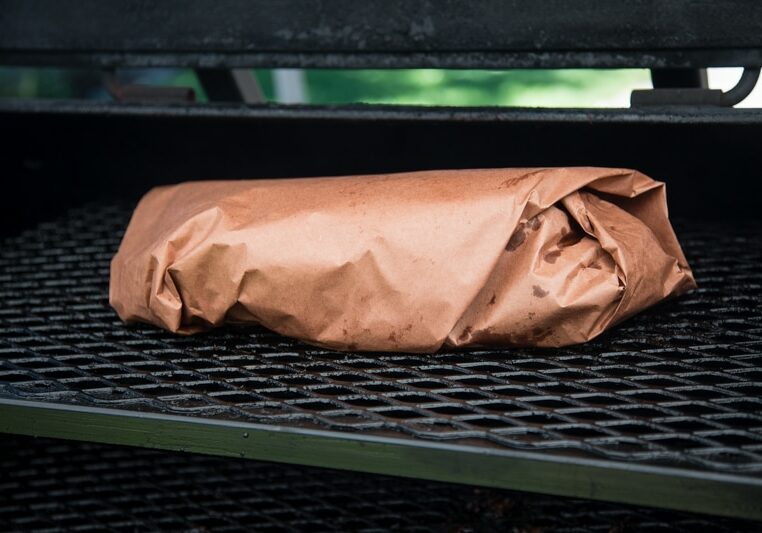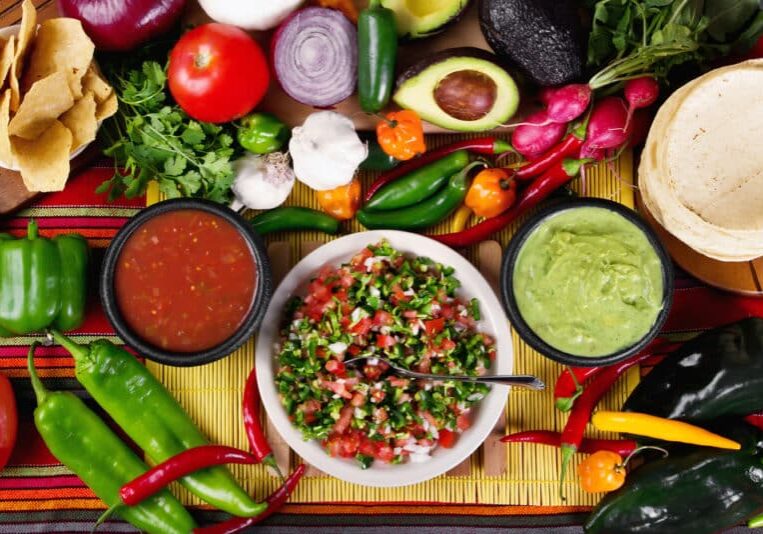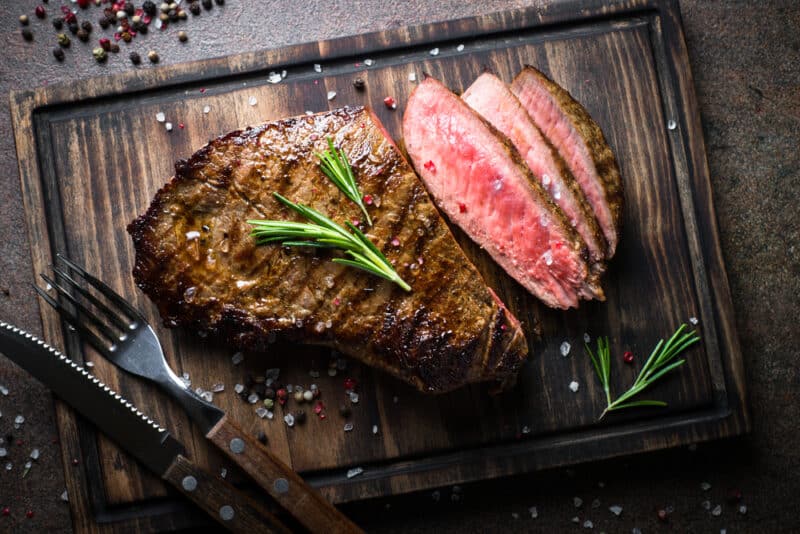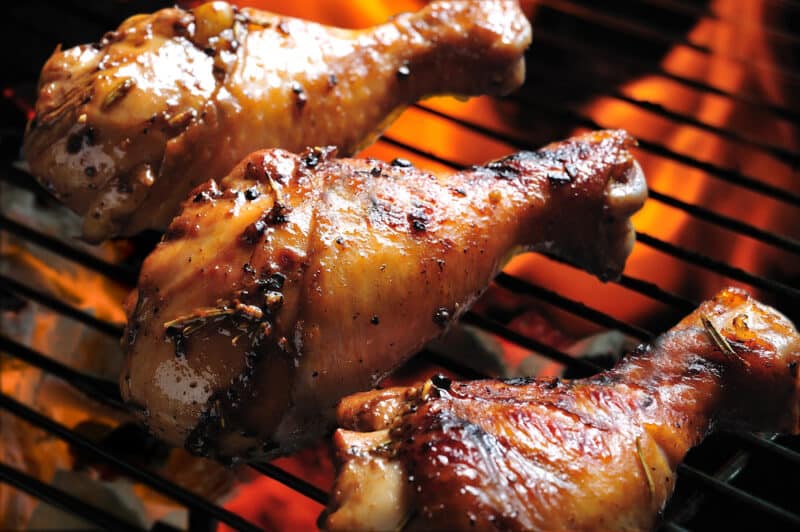When to Wrap Brisket (5 Tips to Make it Perfect)
TheGrillingMaster.com is reader-supported. If you buy something using the links on our site, we might earn an affiliate commission at no added cost to you. This helps us pay our staff to keep making awesome content for you!
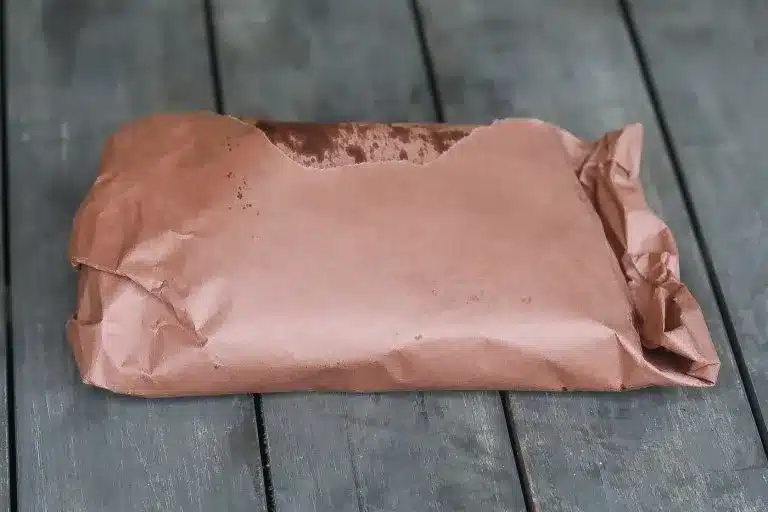
Everyone loves delicious brisket…but did you know the secret to the perfect brisket is all in how you wrap it? In this article I’ll walk you through the essentials of wrapping brisket. Let’s dive in!
Importance of Wrapping Brisket
Wrapping brisket during the cooking process is crucial for a few reasons:
- Moisture retention: Wrapping helps trap the natural juices. This will prevent the meat from drying out and also maintain its tenderness.
- Temperature control: Wrapping acts as an insulator and helps the meat reach the desired internal temperature.
- Stall avoidance: During cooking sometimes brisket may experience a “stall”. A stall is when its temperature plateaus. Wrapping can help push through this stall and keep the cooking process on track.
What is Brisket?
Brisket is a flavorful cut of beef that comes from the breast or lower chest area of a cow. It consists of two main muscles: the flat and the point.
It’s known for its rich marbling that gives the meat its unique taste and tenderness. Due to its dense connective tissue brisket requires slow cooking methods. The best way to cook brisket is by smoking it so that you can break down the fibers and achieve a tender and juicy result.
Related reading >> Hot-and-fast brisket.
Wrapping Materials
There are three common materials used for wrapping brisket:
1. Aluminum Foil
Aluminum foil is the most popular choice for wrapping brisket. It’s easy to find, affordable, and an excellent insulator.
Foil creates a tight seal that traps in the steam and moisture which can results in a more tender brisket. It can also soften the bark (the crusty exterior) due to the trapped moisture. This softening makes for an even more tender piece of meat that people appreciate.
2. Butcher Paper
Butcher paper is another popular option – and my personal go to choice when I make brisket. It allows for some breathability which can help preserve the bark while still retaining moisture.
Many brisket loving enthusiasts prefer butcher paper for its ability to strike a balance between moisture retention and bark preservation.
3. Parchment Paper
Parchment paper is less common but still an option for wrapping brisket. It shares similar properties with butcher paper: allowing for breathability while retaining moisture.
However it’s really not as durable as butcher paper or aluminum foil… so that can end up being too much of a challenge to create a tight seal.
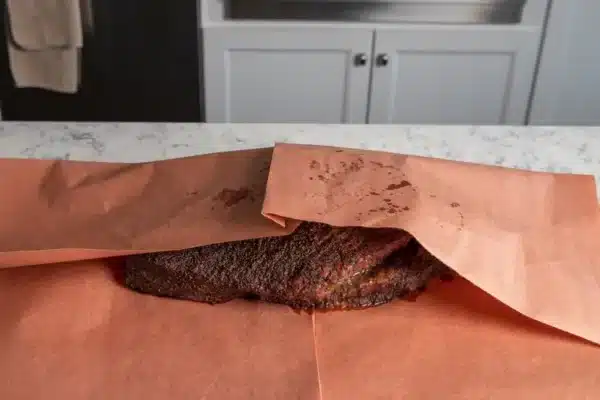
When to Wrap Brisket
The ideal time to wrap your brisket is when it reaches the “stall” phase during cooking, which typically occurs around 150-170°F (65-77°C).
This is when the meat’s internal temperature will plateau for a while. Wrapping can help push through this stage.
You can also decide to wrap based on the color and bark development. You want to look for when the brisket has a deep mahogany color and a nicely formed crust.
More reading: Brisket spraying vs mopping.
How to Wrap Brisket
With Aluminum Foil
- Remove the brisket from the smoker or grill and place it on a large sheet of aluminum foil.
- Fold the foil over the brisket – making sure that it’s completely covered.
- Crimp the edges of the foil together to create a tight seal. You need to trap the steam and moisture inside.
- Return the wrapped brisket to the smoker or grill and continue cooking until it reaches the desired internal temperature (usually 195-200 degrees).
With Butcher Paper
- Remove the brisket from the smoker or grill and place it on a large sheet of butcher paper.
- Fold the paper over the brisket (just like you would with foil) and again make sure the meat is fully covered.
- Tightly roll the edges of the paper together to seal the brisket inside.
- Return the wrapped brisket to the smoker or grill and continue cooking until it reaches your desired internal temperature. (As I said above, this is usually 195-200 degrees).
With Parchment Paper
Follow the same steps as you would with butcher paper: just using parchment paper instead. One other tip here is that a lot of people really like to spray their brisket because it allows you to add extra falvor.
Unwrapping and Resting
It’s time to remove it from the smoker or grill once your brisket reaches the desired internal temperature (usually around 195-200°F).
Carefully unwrap the brisket while being mindful to keep any hot juices that may have accumulated inside.
Allow the meat to rest for at least 30 minutes to an hour before slicing. Resting helps redistribute the juices which gives you a tender and juicy final product.
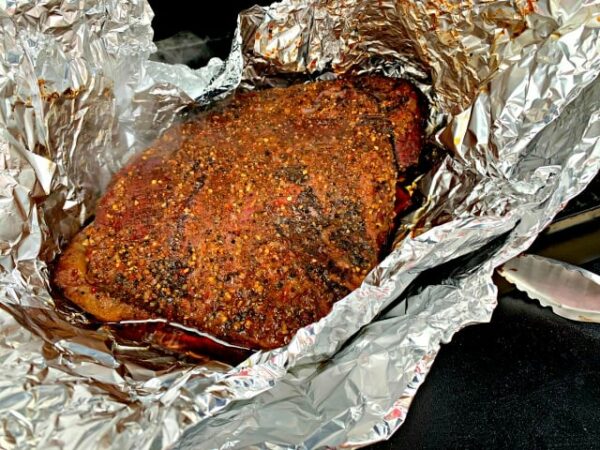
Tips for Perfect Brisket
- Use a high-quality meat thermometer to monitor the internal temperature accurately.
- Be patient and don’t rush the cooking process. Low and slow is the key to a tender brisket.
- Keep a consistent temperature in your smoker or grill throughout the cooking process.
- Slice the brisket against the grain for maximum tenderness.
FAQs
1. How long should I cook a wrapped brisket?
The total cooking time for a brisket depends on its size and the cooking temperature. Generally speaking you can expect to cook a wrapped brisket for approximately 1 to 1.5 hours per pound at 225-250°F (107-121°C).
2. Can I wrap a brisket in plastic wrap before foil or butcher paper?
No! Plastic wrap is not suitable for high-temperature cooking, as it will melt and release harmful chemicals. Stick to aluminum foil, butcher paper, or parchment paper for wrapping brisket.
To be extra clear: do not wrap brisket in plastic ever!
3. How do I store leftover wrapped brisket?
Allow the brisket to cool completely and then wrap it tightly in aluminum foil.
Store it in an airtight container or a resealable plastic bag in the refrigerator for up to four days or the freezer for up to three months.
4. What is the Texas Crutch method for brisket?
The Texas Crutch is a technique where you wrap the brisket in aluminum foil or butcher paper during the cooking process to help it through the stall phase, retain moisture, and achieve a tender result.
5. Can I wrap my brisket in a combination of foil and butcher paper?
Yes, you can and should wrap your brisket in foil or butcher paper!
Some pitmasters use a double-wrap technique: using foil first to trap moisture followed by butcher paper to allow for breathability and bark preservation.
However please note that this method may require more careful monitoring of the internal temperature to avoid overcooking.
6. How can I tell when my brisket is done?
While using a meat thermometer to measure the brisket’s internal temperature is the most accurate method.
It’s also fine to check for tenderness by inserting a probe into the meat to get a feel for it’s doneness. If the probe slides in and out with little resistance, your brisket is likely done.
7. Do I need to wrap my brisket if I’m using a water pan in my smoker?
Using a water pan in your smoker can help maintain moisture… but please note that it does not provide the same benefits as wrapping.
8. Can I cook brisket without wrapping it at all?
Yes – you can cook a brisket without wrapping it. But you should know that it will take longer to cook and could result in a dryer and less tender final product. This is why wrapping is recommended for achieving optimal tenderness and moisture retention.
9. What side of the brisket should face up when wrapping?
I think it’s best to have the fat cap facing up when wrapping a brisket. This allows the fat to render and baste the meat as it cooks and therefore contributing to a more tender and flavorful result.
10. How long should I wait before slicing into a rested brisket?
Allow your brisket to rest for at least 30 minutes to an hour before slicing. This resting period helps redistribute the juices throughout the meat, resulting in a more tender and juicy final product.
11. How do I reheat wrapped brisket?
To reheat wrapped brisket you can simply use one of the following methods:
- Oven: Preheat your oven to 300°F (150°C). Place the brisket, still wrapped in foil or butcher paper, in a baking dish, and add a small amount of liquid, such as beef broth, to the bottom of the dish. Cover with a lid or another layer of foil and heat for 25-35 minutes, or until the internal temperature reaches 165°F (74°C).
- Slow cooker: Place the wrapped brisket in a slow cooker, add a small amount of liquid, and set it to low. Heat for 2-3 hours, or until the internal temperature reaches 165°F (74°C).
12. Can I wrap a brisket in foil after it’s been wrapped in butcher paper?
Yes you can technically switch from butcher paper to foil during the cooking process if you wish to retain more moisture or if the butcher paper becomes too saturated. However this is probably not worth the effort and also may lead to a softer bark due to the trapped steam and moisture.
13. Why is my wrapped brisket still tough?
If your wrapped brisket is still tough it is very likely to be undercooked. Brisket requires a long cooking time at low temperatures to break down the connective tissues and achieve tenderness. Make sure you’re cooking the brisket long enough and monitoring the internal temperature with a meat thermometer.
14. Can I wrap a brisket in foil and then finish it on the grill?
Yes. You can wrap a brisket in foil and finish it on the grill. This method can help develop a nice bark and add a smoky flavor to the meat. Just be careful not to overcook the brisket and watch the internal temperature closely.
15. What should I serve with my wrapped brisket?
There are many delicious side dishes that pair well with brisket, including:
- Coleslaw
- Baked beans
- Macaroni and cheese
- Potato salad
- Grilled or steamed vegetables
- Cornbread
- Mashed potatoes
Choose your favorite sides and enjoy a well-rounded barbecue meal with your perfectly cooked wrapped brisket!
Conclusion
Wrapping brisket is an essential step in achieving the perfect tender and juicy smoked meat. By understanding the importance of wrapping and using the appropriate materials, you can master the art of brisket smoking. Grab your smoker or grill and start practicing your wrapping skills for a delicious brisket experience.
Learn More About Grilling
If you want to learn more about grilling, check out these other helpful resources!

Kevin Turner
Hi there, I'm Kevin Turner, Founder and CEO of thegrillingmaster.com. I started this website to share my passion and knowledge with you. You can leverage my years of experience as a pit master and professional to grill great food!
About The Grilling Master
Hi there, I'm Kevin Turner, Founder and CEO of thegrillingmaster.com.
My passion has always been grilling, smoking and BBQ delicious meats that satisfy my inner carnivore!
I started this website to share my passion and knowledge with you, the hungry reader who wants to prepare the perfect meal.
You can leverage my years of experience as a pit master and professional.
Send me a message and let's connect on Twitter here.


